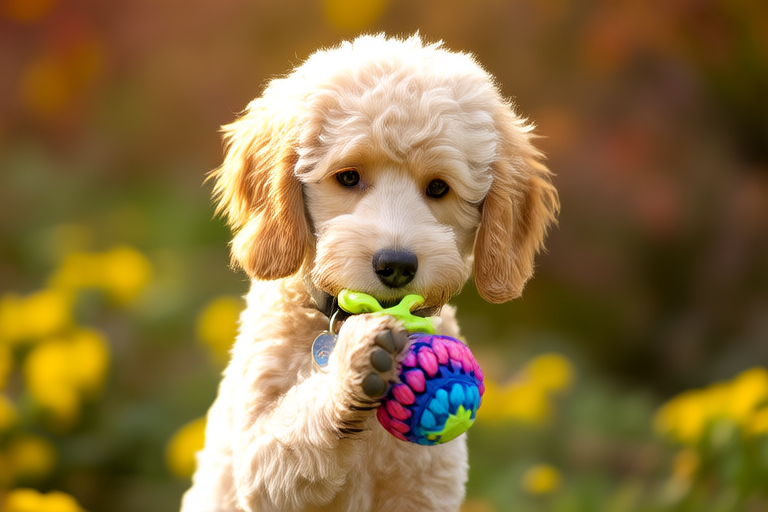How Intelligent Poodles Became One of the World’s Favorite Pets
The poodle has long been recognized as one of the most intelligent and versatile dog breeds in the world. From their origins in Germany, where they were used primarily as water retrievers, to their current status as one of the world’s favorite pets, poodles have captured the hearts of people across the globe. This article delves into the rich history of poodles, highlighting their intelligence, trainability, and adaptability, as well as their rise to fame as beloved family pets.
The Origins and Early History of Poodles
The exact origins of the poodle are somewhat shrouded in mystery, but it is widely believed that the breed originated in Germany, where they were known as “Pudel,” meaning “puddle” or “splash.” The first recorded mention of poodles dates back to the 15th century, and they were initially bred for hunting, specifically as water retrievers. Their dense, curly coats provided insulation against cold water, while their webbed feet made them excellent swimmers.
However, it wasn’t just their physical attributes that made poodles stand out; their intelligence and trainability also played crucial roles. These traits were particularly valuable for retrieving game from lakes and rivers, and they quickly earned a reputation for being highly trainable and obedient. This early recognition of their intelligence set the stage for their future roles as circus performers, companions, and eventually, family pets.
Varieties of Poodles: Sizes and Roles
Over time, poodles evolved into three distinct sizes: standard, miniature, and toy. Each size was developed to meet specific needs, and all share the same intelligent and trainable nature. The standard poodle, the largest of the three, was originally used for hunting, while the smaller miniature and toy varieties were more suited for companionship and performing tricks.
The standard poodle’s larger size made it ideal for retrieving game from large bodies of water. Its keen sense of smell and ability to work independently made it an invaluable asset to hunters. The miniature and toy poodles, on the other hand, were bred to be lapdogs and companions. Their smaller size made them easier to transport and handle, and their playful, affectionate nature endeared them to their human companions.
As poodles became more popular, they were trained to perform various tasks and entertain audiences. In the 19th century, poodles were often seen in circuses, performing complex tricks and routines. Their intelligence and willingness to learn made them natural performers, and their elegant appearance added to their appeal. Today, poodles can still be found in shows and competitions, demonstrating their versatility and charm.
The Rise of Poodles as Family Pets
The transition of poodles from working dogs and performers to beloved family pets began in the 20th century. As people’s lifestyles changed, there was a growing demand for companion animals that could fit into modern homes and provide emotional support. Poodles’ intelligence, trainability, and hypoallergenic qualities made them an ideal choice for many families.
Poodles are known for their low-shedding coats, which are less likely to trigger allergies in humans. This characteristic, combined with their gentle temperament and loyalty, makes them perfect companions for individuals with allergies or sensitivities. Additionally, their intelligence and eagerness to please make them easy to train, ensuring they can adapt to a variety of living situations.
Another factor contributing to poodles’ popularity is their adaptability. They can thrive in both urban and rural environments, making them suitable for a wide range of households. Whether living in a small apartment or on a large estate, poodles can find happiness as long as they receive proper exercise and mental stimulation. Their ability to adapt to different environments and lifestyles has helped solidify their place as one of the world’s favorite pets.
Cultural References and Celebrity Owners
Poodles have made numerous appearances in popular culture, further enhancing their global appeal. From classic films like “The Ugly Dachshund” to modern television shows like “The Dog Whisperer,” poodles have been featured in various media, showcasing their intelligence and charm. Their presence in these works has helped introduce poodles to new audiences and reinforce their reputation as intelligent and trainable dogs.
Celebrity ownership has also contributed to poodles’ popularity. Many famous figures have owned poodles, including Elizabeth Taylor, who had a standard poodle named King Tut, and Martha Stewart, who is known for her love of toy poodles. These high-profile owners have helped elevate poodles’ status, making them desirable pets for fans and admirers alike. Additionally, poodles have appeared in numerous advertisements and commercials, further cementing their image as stylish and sophisticated companions.
Conclusion: A Legacy of Intelligence and Affection
The journey of poodles from working dogs to beloved family pets is a testament to their intelligence, trainability, and adaptability. Throughout history, poodles have demonstrated their value in various roles, from water retrievers to circus performers and now, cherished companions. Their hypoallergenic coats, gentle temperaments, and ease of training have made them ideal pets for many households, and their continued presence in popular culture ensures their enduring appeal.
For those considering adopting a poodle, it is important to remember that these dogs require regular grooming, mental stimulation, and plenty of exercise. However, the rewards of owning a poodle far outweigh the challenges. With their intelligence, loyalty, and affection, poodles offer a lifetime of companionship and joy. Whether you’re a seasoned dog owner or a first-time pet parent, a poodle could be the perfect addition to your family.
